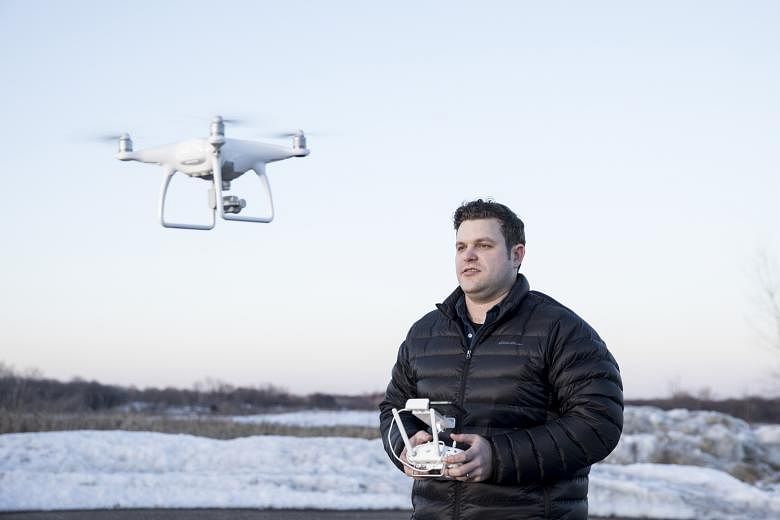NEW YORK • The presents have been unwrapped. The batteries have been charged. Chances are, a few of those new gizmos may be designed to make air travel less stressful and more productive.
Even so, when it is time to board the flight home after the holidays, some gifts simply might not fly.
Devices powered by lithium-ion batteries can cause problems and airlines baulk at virtual reality headsets. Even non-electronic travel aids can cause concern.
Last holiday season, hoverboards went on airlines' Do Not Fly lists because of their propensity to catch fire.
This year, expect drones to draw scrutiny, depending on the strength of their batteries.
Under the International Civil Aviation Organization's dangerous goods regulations, lithium-ion batteries with power greater than 100 watt-hours are not allowed on passenger aircraft without advance approval from the airline.
Batteries with power greater than 160 watt-hours are not allowed in passenger carry-on or checked baggage.
Mr Kyle Christy, 30, an auto repair manager from the state of Minnesota, said he often flies with the drones he uses for his freelance job as an aerial photographer.
"The airlines should make it easier," he said. "A lot of drone batteries are based off milliamp hours. The airlines don't give the formulas to crunch the numbers to see if they fall under the proper watt-hour restrictions."
With their phones, tablets, cameras and laptops, many passengers carry several battery-powered devices on board. On a wide-body jet, that could add up to more than 1,000 batteries in the passenger cabin. And sometimes they do catch fire.
That was why when the Samsung Galaxy Note 7 smartphone was recalled in September, the United States Department of Transportation banned the model from all flights.
Airline websites typically offer detailed lists of banned, restricted or dangerous goods. But it is difficult to keep up with the marketplace - as with this year's hot-selling virtual reality headsets. More than six million of them have been shipped this year, according to SuperData, a market research firm.
Virtual reality gives users a total visual and auditory experience for games and movies. But wearing the goggles and ear-covering headphones can make users oblivious to their surroundings. This is why some airlines have prohibited their use during taxi, take-off and landing.
"If you are switching off your own situational awareness, you are increasing the risk of injury to yourself if there is an evacuation," said Mr Jonathan Jasper, manager of cabin safety for the International Air Transport Association, an airline trade group.
"The guidance across the airlines is they won't allow them during those portions of the trip," Mr Jasper said of the headsets. "They need their passengers to be aware of what is going on."
He gets together every six weeks or so with the safety representatives of 17 airlines to analyse the risks and hazards of new technology and consider whether restrictions are necessary.
"The job of an airline is not to upset passengers before they board," he said.
But airlines feel a need to be vigilant about the things passengers carry with them onto planes.
Not all questionable carry-ons are electronic.
Ms Nicola Burke is a British expatriate and family travel blogger living in Hong Kong. When she flies with her daughters, ages seven and five, she takes a Fly-Tot cushion, the creation of two California mothers who are also frequent fliers. The inflatable Fly-Tot fits on the floor in front of the seats and creates a flat surface where children can stretch out during the flight.
"I have used the Fly-Tot on several airlines, including British Airways, Virgin, Cathay Pacific and Thai Airways," she said. "I have never been questioned about it."
But safety officials are scrutinising the Fly-Tot for its potential to cause heat to build up around in-flight entertainment boxes beneath the seats on some aircraft.
Mr Jasper said Fly-Tot's maker was working to modify the product to reduce that likelihood and the risk the device might block decompression vents on the floor.
NYTIMES

